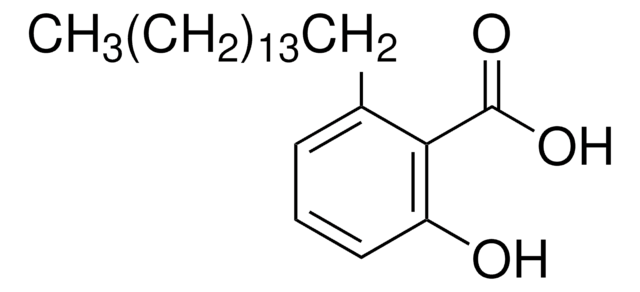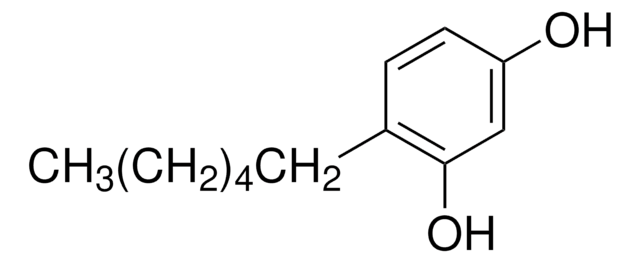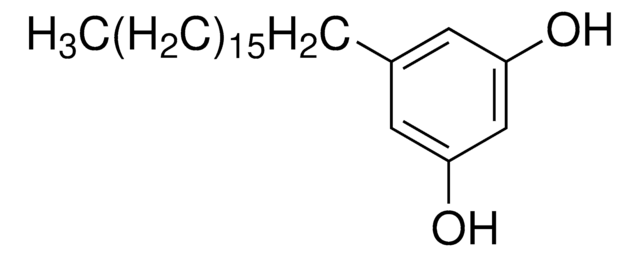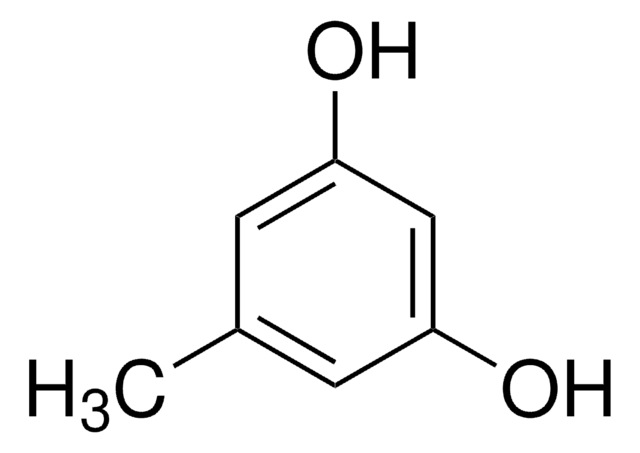Wichtige Dokumente
91822
5-Pentadecyl-resorcin
analytical standard
Synonym(e):
1,3-Dihydroxy-5-pentadecyl-benzol, 5-Pentadecyl-1,3-benzoldiol
About This Item
Empfohlene Produkte
Qualität
analytical standard
Qualitätsniveau
Assay
≥95.0% (HPLC)
Haltbarkeit
limited shelf life, expiry date on the label
Methode(n)
HPLC: suitable
gas chromatography (GC): suitable
Anwendung(en)
cleaning products
cosmetics
food and beverages
personal care
Format
neat
Lagertemp.
2-8°C
SMILES String
CCCCCCCCCCCCCCCc1cc(O)cc(O)c1
InChI
1S/C21H36O2/c1-2-3-4-5-6-7-8-9-10-11-12-13-14-15-19-16-20(22)18-21(23)17-19/h16-18,22-23H,2-15H2,1H3
InChIKey
KVVSCMOUFCNCGX-UHFFFAOYSA-N
Allgemeine Beschreibung
Anwendung
- Goji berries using ultra-high-pressure liquid chromatography coupled with quadrupole-time-of-flight mass spectrometry (UHPLC-ESI-QTOF-MS).
- Mango (Mangifera indica L.) peels using high-performance liquid chromatography/atmospheric pressure chemical ionization mass spectrometry (HPLC/APCI-MS).
Verpackung
Empfohlene Produkte
Signalwort
Warning
H-Sätze
Gefahreneinstufungen
Eye Irrit. 2
Lagerklassenschlüssel
11 - Combustible Solids
WGK
WGK 3
Flammpunkt (°F)
Not applicable
Flammpunkt (°C)
Not applicable
Hier finden Sie alle aktuellen Versionen:
Besitzen Sie dieses Produkt bereits?
In der Dokumentenbibliothek finden Sie die Dokumentation zu den Produkten, die Sie kürzlich erworben haben.
Kunden haben sich ebenfalls angesehen
Unser Team von Wissenschaftlern verfügt über Erfahrung in allen Forschungsbereichen einschließlich Life Science, Materialwissenschaften, chemischer Synthese, Chromatographie, Analytik und vielen mehr..
Setzen Sie sich mit dem technischen Dienst in Verbindung.












